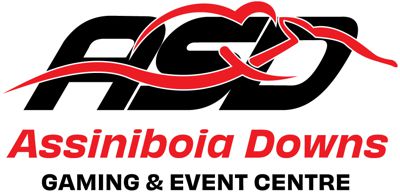Art of finding the extraordinary within the ordinary takes work, but worthwhile
by Rob
Handicapping in the 21st century has become a game that is devoid of easy money. Long gone are the days of the $2 bettor. Now the competition is between the educated versus the educated. There is still an edge to be gained on the crowd however, if you are prepared to do the extra work.
The pools are not soaked with uneducated money or dead money at any racetrack in North America, except on big days like Kentucky Derby and Breeders’ Cup. This means that horseplayers need to hold an advantage over other players.
This takes us back to the long standing battle between good form handicappers versus informed insiders. It has long been thought that these two schools of thought were mutually exclusive, but in reality they are not. Even though the average bettor cannot walk up to a trainer and get a hot tip, they can still access information that others do not have. It may not be easy to find, but by spending a little bit of time looking at the past, some huge opportunities can open up in the future.
Everyone saw Game on Dude get a really bad trip in the Breeders Cup’ Classic. It doesn’t take a trained eye to notice something like that. It does take a keen eye to notice things that aren’t so obvious, but definitely more profitable. Every horseplayer, it is assumed, will have access to the Daily Racing Form or program, each of which has a comment about how a horse ran. The problem is that every horseplayer has access to these information sources, so there is little competitive advantage to be gained here. A few things that can provide an edge however, with observation and study, include track biases, detailed subtle trip handicapping and physical conditioning.
Track biases are a major part of racing. There are many days where the rail gets good, but also days when the track is speed biased. This is often due to the work the maintenance team does to the track. The theory of track biases can be applied anywhere, but anytime multiple horses outrun their odds from similar positions on the track, or with similar running styles, it pays to take note. Take for example opening day at ASD. I believe that the rail was dead for some reason and probably a length or two slower than the outside paths. This information is not publicly available and must be observed. It is inside information for those who are prepared to do the extra observation work.
While speed handicapping represents the scientific side of handicapping, trip handicapping is the artistic side. One horseplayer may see something in a race where another does not. Inside information is defined as “non-public” information. If you can observe the subtle events that make up a race you have information that many others are not privy to. The past performances are just a lead up to the current race, where the most important question is how is the horse going to run today.
Trip handicappers should look for subtle things: traffic when a horse is starting to move; a horse getting crowded but not impeded; how wide a horse is around both turns; and anything else that looks like it could impact a horse’s chances. These observations can be especially valuable when the chart caller does not take note of them and a player has therefore created an inside advantage for himself.
Physical conditioning of a horse is not my strong suit but some players do believe quite heavily in it. Horses that sweat up or behave badly before a race can be noted and watched to see how they act next time out. Horses that don’t like the gate and behave badly are also worth noting. The ability to change leads, or how a horse gallops out after a race, are both tricky observation skills to apply, but can be incredibly profitable.
I love big thick horses with the large hindquarters. Many noted racing experts like a little more athletic type of a horse, but physical conditioning is definitely a hugely subjective topic. The most important thing however, is noting how a horse behaved in the paddock, on post parade, and at the gate before a race, and identifying any changes that occur in these areas before its next start. This is where value can be found.
The amount of work it takes to look at the horses, track the charts for biases, and watch replays for less than ideal trips, is well worth it. You can use this “inside” information in combination with your form handicapping to gain a competitive advantage over your fellow horseplayers, find value where others cannot, and succeed at the races.
Rob’s Best Bets and Weekend Longshots
Record-to-Date 1-2-0 Profit: -$8.90
Friday Best Bet: Race 2 — Brock N Rock
Friday Longshot: Race 6 — El Grayling
Saturday Best Bet: Race 2 — A Girl’s Gotta Do
Saturday Longshot: Race 8 — Thomas Baines
Next Post Time for Live Racing: 7:30 p.m. Friday, May 17, 2013

